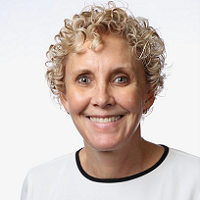 By Dr. Tandy Tipps, Senior Vice President of Healthcare Solutions, Inteliquet
By Dr. Tandy Tipps, Senior Vice President of Healthcare Solutions, Inteliquet
Twitter: @inteliquet
Patients and doctors missed or cancelled an estimated 22 million cancer screenings in the first four months of the coronavirus pandemic, resulting in an estimated 80,000 missed diagnoses, according to research published last year. Another study found that diagnoses for six major cancer types dropped by almost half.
The drop-off in testing led major cancer centers, the American Cancer Society and other organizations recently to call for the tests to resume. “Advances in cancer screening and treatment have resulted in a significant decline in the annual death rate from cancer,” the organizations wrote. “We must not lose our momentum now.”
Screenings are essential to diagnosing cancer and getting patients on the path to recovery, and it is clear resuming them is only one of many steps cancer centers must take to rebound from the COVID-19 pandemic. Oncologists and cancer researchers also need to make up for time lost due to trial shutdowns and slowdowns, as fewer patients are receiving diagnoses that make them eligible for clinical trials.
As of June 2020, patient engagement in clinical trials had dropped by approximately 40 percent compared to prepandemic levels – an improvement from April when engagement dropped by 70 percent, but still quite concerning. In November 2020, one in five patients still reported being less likely to enroll in a trial, primarily due to concerns about contracting COVID-19.
Patients interested and eligible for clinical trials still exist. However, we need an innovative patient and site-centric solution to find them. In 2021, cancer centers have an opportunity for a reset using sophisticated technologies to process patient data, such as natural language processing (NLP), to achieve that goal. NLP takes unstructured data, such as physician notes, faxes, labs and ECOG and structures them. For example, a heuristic parser can learn to use language to find morphologies, Gleason Scores and molecular markers from unstructured medical data.
Prior to the pandemic, about half of all clinical trials failed to meet enrollment goals, while less than 14 percent of trials were completed on time, directly impacting the opportunities for patients to obtain potentially life-saving treatments while also wasting cancer centers and industry sponsors’ time and money.
A multitude of factors negatively impact cancer patients’ unbridled access to clinical trials, including geographic, socio-economic, health, educational and racial disparities as well as a lack of meaningful information that addresses concerns and questions regarding clinical trials and drug efficacies. The biggest barrier to access, however, are the gaps between treatment and research that prevent physicians from connecting their patients with clinical trials.
Cancer centers simply do not have the time, resources and money to spin their wheels trying to source patients that might become a match for a trial. Sponsors already inundate cancer centers with lengthy feasibility questionnaires to determine if they can run specific trials in their clinical settings. These questionnaires can take hours to complete, often because staff must manually retrieve records and call doctors to confirm they are accurate.
If we are going to encourage physicians to refer more patients for clinical trials, we need to give them tools that streamline the screening process and save them from manually filling out feasibility requests and reviewing patient charts. Tools that can help identify and match patients to the right trial in minutes rather than days.
Accurately matching eligible patients to trials is vital to sponsors, physicians and patients. When sponsors award trials, cancer centers come under immense pressure to achieve study start up and site activation, in 90 days or less. Therefore, sponsors want to see patients identified well before that 90-day threshold The old way of projecting patient enrollment numbers no longer works. In fact, it exponentially increases the risk of trials failing to launch or shutting down.
Hitting these tight study start up and first-patient-in timelines as well as gaining early insights into patient eligibility is crucial to making up for time lost due to Covid-19, and it’s only realistic if we are able to leverage data platforms at the clinical level.
Most importantly, cancer patients deserve our best efforts to provide expanded access to potentially life-saving clinical trial and treatment options. Digital solutions that are proven to fast-track this process are a necessity.
